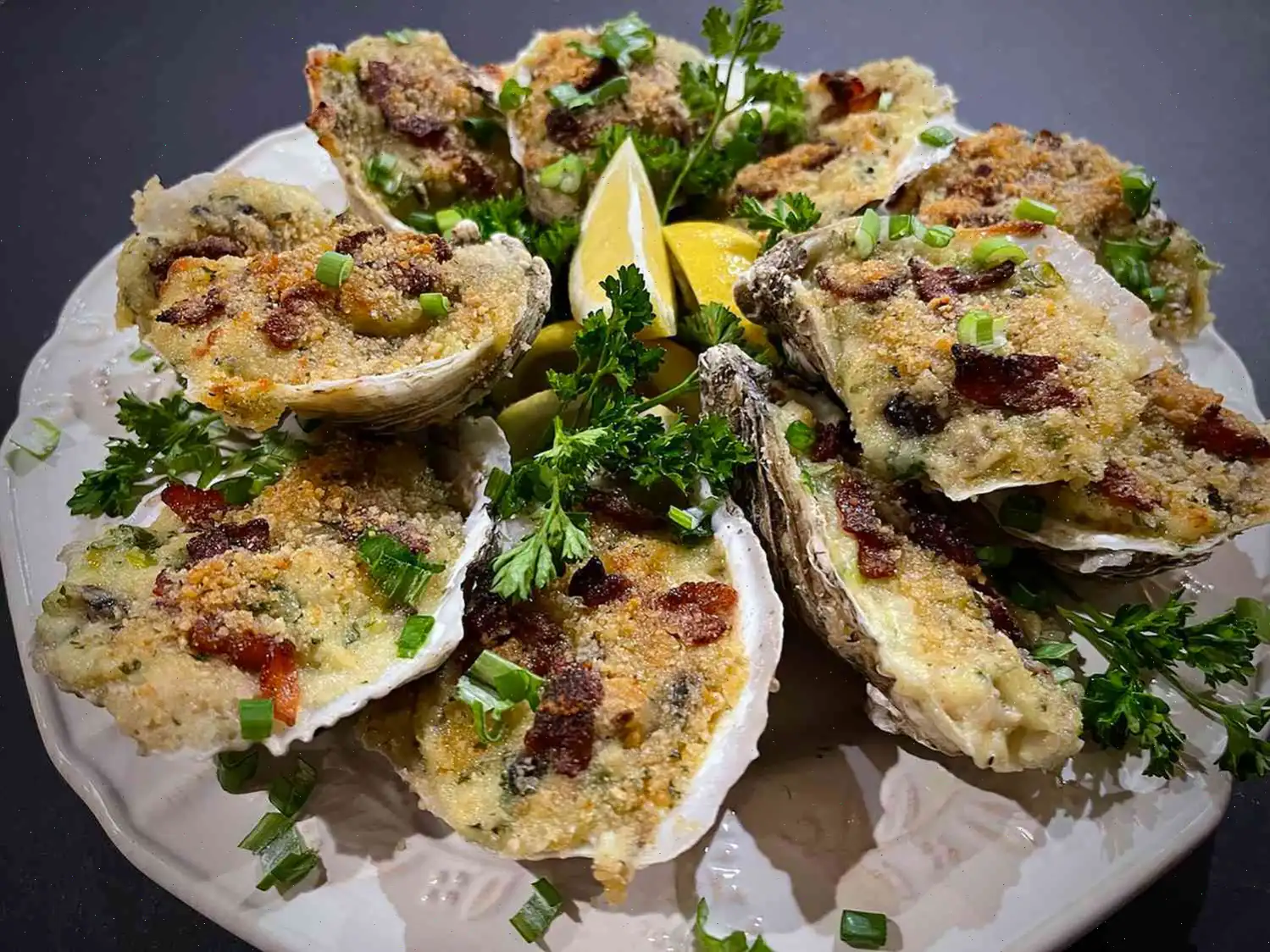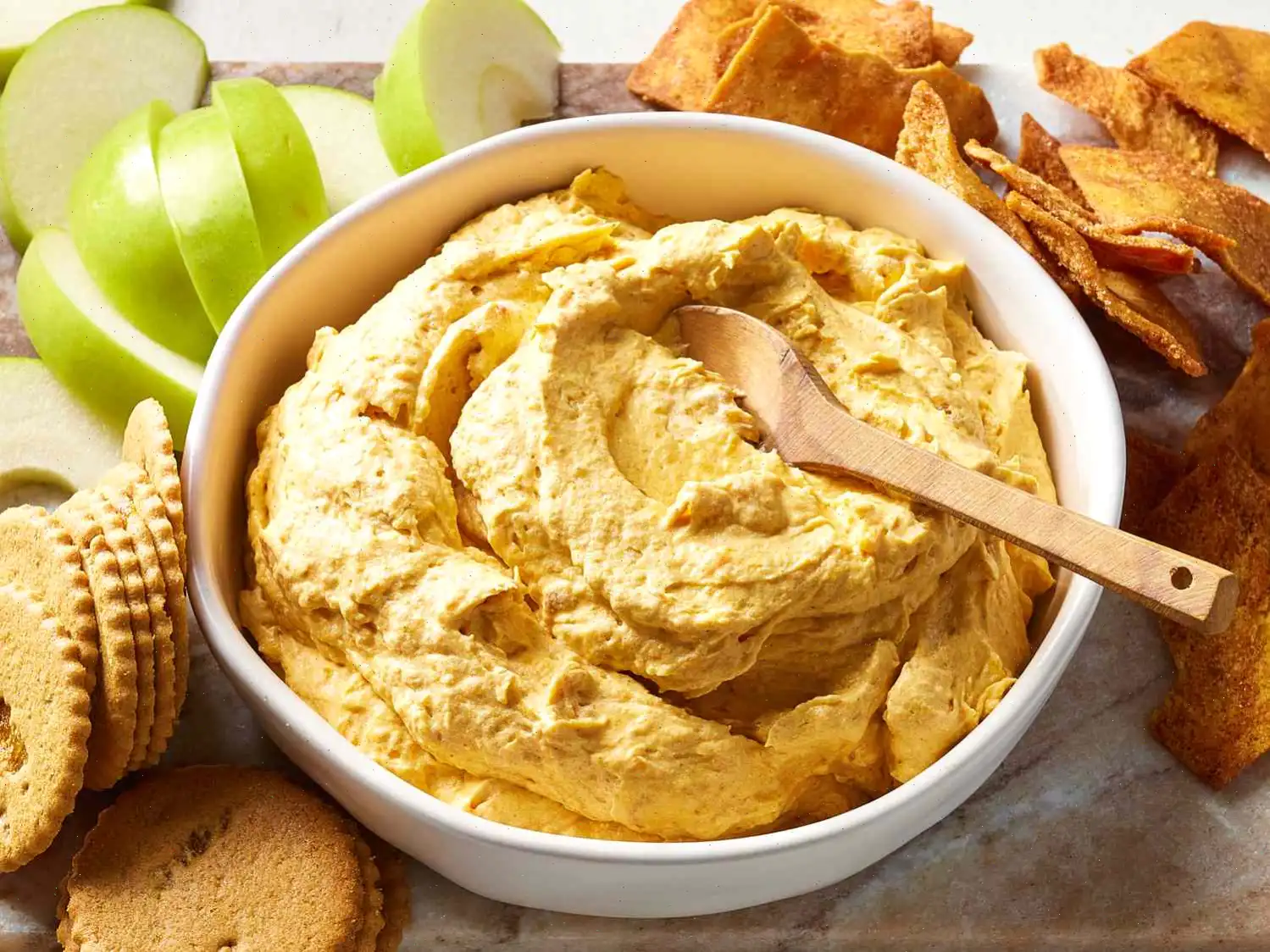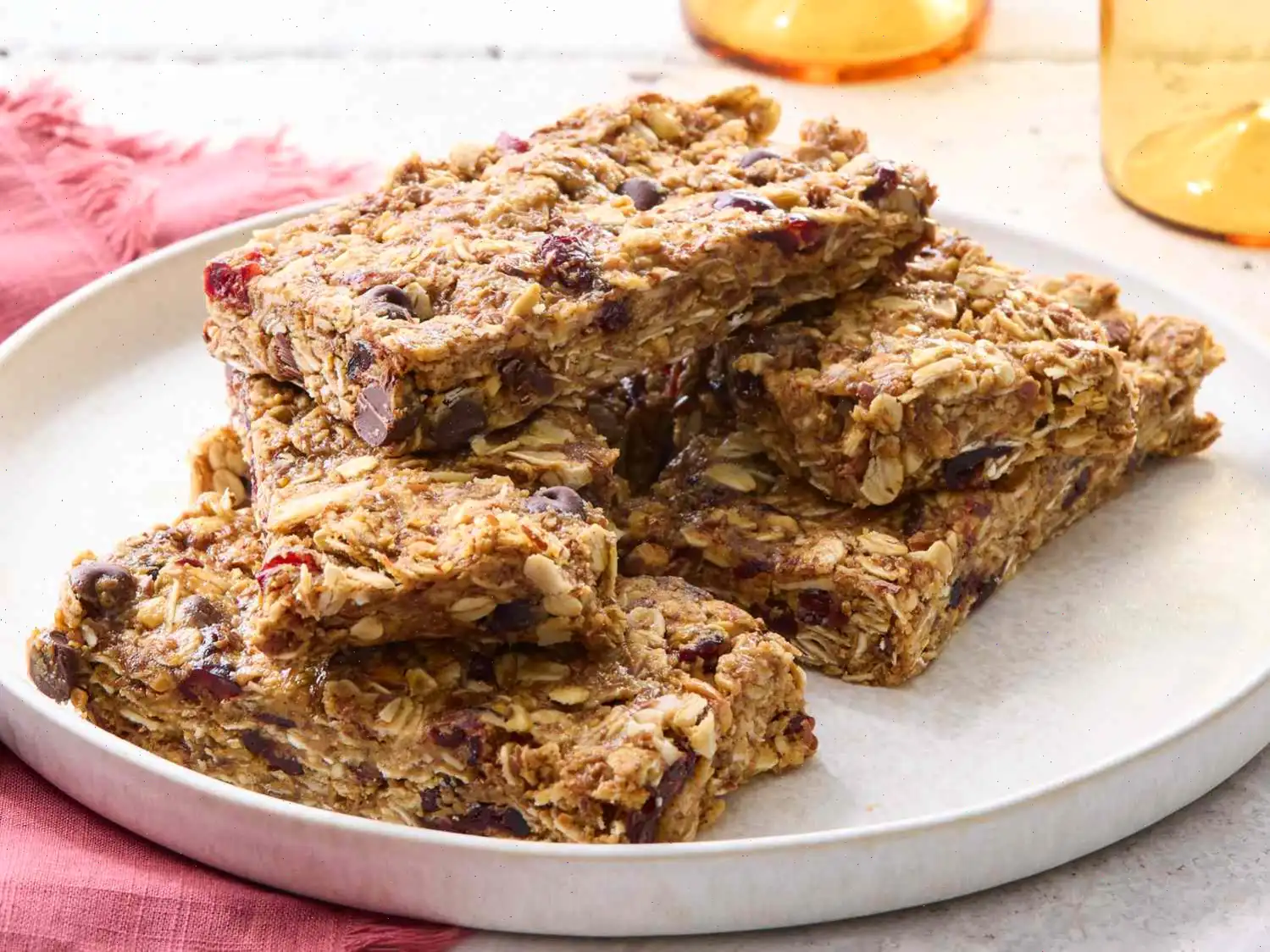
Oysters Bienville Recipe
Ingredients
- 1 cup rock salt, or as needed
- 2 strips bacon, diced
- 1/2 cup chopped mushrooms
- 4 medium raw shrimp, peeled, deveined, and roughly chopped
- 1 dozen freshly shucked oysters with their liquor, reserving shells
- 3 tablespoons unsalted butter, divided
- 2 green onions, chopped, white and green parts separated
- 1 clove garlic, minced
- 3 tablespoons all-purpose flour
- 1 large egg yolk
- 1/4 cup chopped fresh parsley
- 1/2 cup heavy cream
- 1 cup grated Parmesan cheese
- 1/2 teaspoon salt
- 3 tablespoons seasoned bread crumbs
- 1 lemon, cut into wedges, for serving
- Fresh parsley sprigs (optional)
Directions
- Preheat the oven to 450F (230C). Spread a generous layer of rock salt over a sheet pan to stabilize the oysters.
- In a small, non-stick skillet, cook the diced bacon over medium heat for about 5 minutes, until crispy and browned. Remove bacon from the skillet and set aside.
- In the same skillet, melt 1 tablespoon of butter. Add the chopped mushrooms and cook for 3-4 minutes, allowing them to soften in the bacon fat. Add shrimp and cook until the shrimp turns opaque and firm, about 2 minutes. Remove from heat and set the mixture aside, keeping it warm.
- Drain the oysters, reserving 1/2 cup of their liquor (the liquid in which they were stored). Arrange the oyster half shells on the pan with rock salt and place one oyster in each shell.
- In a 9-inch skillet, melt the remaining 2 tablespoons of butter over medium heat. Saut the white parts of the green onions for about 3 minutes, then add the minced garlic. Cook until fragrant, about 30 seconds.
- Slowly whisk in the flour, stirring to form a smooth paste. Remove the skillet from heat.
- In a small bowl, break the egg yolk and mix in the chopped parsley and heavy cream. Gradually stir this mixture into the skillet with the flour and green onion paste until fully combined.
- Return the skillet to the heat over low and add the reserved oyster liquor. Stir continuously until the sauce thickens and becomes creamy, about 3-4 minutes.
- Add the cooked shrimp and mushroom mixture, Parmesan cheese, and salt. Stir until the cheese melts and the sauce is smooth.
- Spoon the sauce over the oysters in their shells. Sprinkle the reserved bacon pieces and seasoned breadcrumbs on top.
- Place the pan in the preheated oven and bake for 12-15 minutes, until the topping is golden brown and the sauce is bubbling.
- Garnish with the reserved green onion tops and fresh parsley sprigs. Serve immediately with lemon wedges on the side.
Cook's Note
If there is not enough oyster liquor to make 1/2 cup, you can substitute chicken stock or seafood stock to make up the difference.
Nutrition Facts (per serving)
| Calories | 23g Fat | 20g Carbs | 20g Protein |
|---|---|---|---|
| 367 | 30% of Daily Value | 7% of Daily Value | 40% of Daily Value |
| Saturated Fat: 12g (62%) | Cholesterol: 171mg (57%) | Sodium: 1961mg (853%) | Vitamin C: 31mg (34%) |
| Dietary Fiber: 2g (6%) | Calcium: 211mg (16%) | Iron: 6mg (34%) | Potassium: 411mg (9%) |
Oysters Bienville is a classic Creole dish that has been delighting food lovers for over a century. This dish consists of oysters baked in a rich sauce made from shrimp, mushrooms, bacon, green onions, garlic, and a touch of cream, all topped with Parmesan cheese and bread crumbs. The result is an indulgent, flavorful appetizer perfect for any seafood lover.
History and Origins
The origins of Oysters Bienville are closely tied to the culinary traditions of New Orleans, Louisiana, a city renowned for its rich Creole and Cajun cuisine. Named after the French colonial governor Jean-Baptiste Le Moyne de Bienville, who founded New Orleans in 1718, this dish was created in the early 1900s. It was first introduced at the famous Antoines Restaurant in New Orleans by Chef Jules Alciatore. The dish quickly became popular among the city's elite, and it has since remained a beloved staple in Creole cuisine.
Regional Variations
While the core ingredients of Oysters Bienville remain the same, there are regional variations that reflect the diverse influences in Creole cooking. In some versions, the sauce may include additional ingredients like crab meat, more elaborate herbs, or a different combination of spices. Despite these small changes, the essence of Oysters Bienville a creamy, savory seafood dish remains consistent throughout the region. It is commonly served in New Orleans, and you can find it featured on the menu of many upscale restaurants in the area.
Differences from Similar Dishes
Oysters Bienville is often compared to Oysters Rockefeller, another famous oyster dish originating from New Orleans. While both dishes are baked oysters with rich, flavorful toppings, the key difference lies in the sauce. Oysters Rockefeller features a sauce made from spinach, butter, and Parmesan cheese, often with a touch of anise flavor from absinthe or pastis. Oysters Bienville, on the other hand, incorporates shrimp, mushrooms, bacon, and a creamy sauce, making it heartier and richer in flavor. Both dishes are similarly luxurious but offer distinct taste experiences.
Where to Serve Oysters Bienville
Oysters Bienville is typically served as an appetizer at fine dining restaurants, particularly those specializing in seafood or Creole cuisine. In New Orleans, its a favorite at celebratory events and festive gatherings. It can also be found on the menus of many renowned seafood restaurants across the Gulf Coast. Its rich and savory nature makes it an ideal start to a multi-course meal, often paired with a crisp white wine or a classic New Orleans cocktail like a Sazerac or a French 75.
Fun Facts About Oysters Bienville
- Oysters Bienville is named after Jean-Baptiste Le Moyne de Bienville, the French explorer who founded New Orleans in 1718.
- Antoines Restaurant, where the dish was first introduced, is one of the oldest and most iconic restaurants in New Orleans, known for its commitment to preserving classic Creole recipes.
- Despite its luxurious appearance, Oysters Bienville was originally conceived as a way to utilize the abundant oysters in the Gulf of Mexico, highlighting the regions love for local seafood.
- The dish is often served in the half shells of the oysters, making it visually stunning as well as delicious.
You can listen to this recipe in AI audio format. Simply click the play button below to listen to the content in a format that suits you best. It’s a great way to absorb information on the go!








